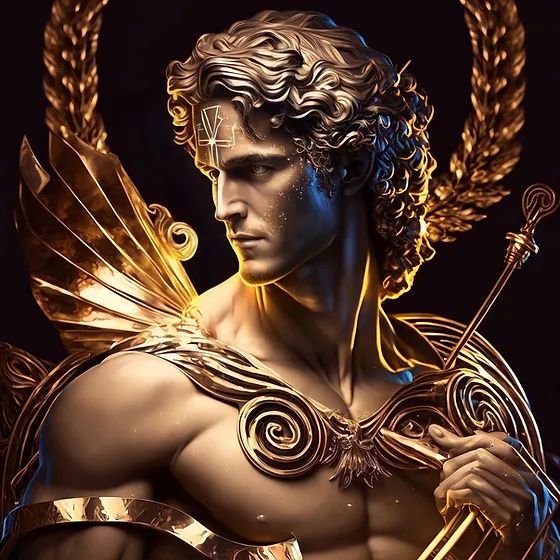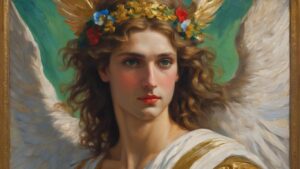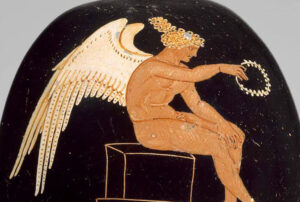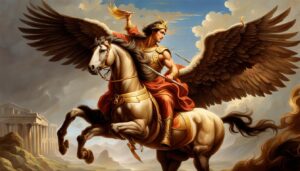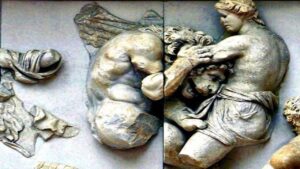Table of Contents
Who Is Apollo?
Apollo holds a significant role in Greek mythology as one of the Twelve Olympian deities residing on Mount Olympus. Various aspects are linked to Apollo, such as music, poetry, prophecy, healing, archery, and the Sun. He is the son of Zeus and Leto, and he shares a twinship with Artemis, the goddess of hunting and the wilderness.
Key Aspects of Apollo in Greek Mythology
God of the Sun: Apollo frequently assumes the role of the sun god, steering a chariot across the sky to usher in daylight.
Arts and Music: Apollo patronizes the arts, especially music and poetry. Often seen with a lyre, he is credited with inventing the lute. The Muses, goddesses of the arts, align closely with Apollo.
Prophecy: Apollo, the god of prophecy and oracles, is famously associated with the Oracle of Delphi. The Pythia, priestesses at Delphi, provide prophetic visions.
Healing: Apollo is recognized as a healer, with his son Asclepius connected to the art of medicine. Temples named “Asclepions” dedicated to Apollo serve as places of healing and worship.
Archery: Apollo’s prowess in archery is a recurring theme, often depicted with a bow and arrows. Some myths attribute the use of his arrows to spread diseases.
Mythological Stories: Apollo is central to numerous myths and conflicts involving other gods and mortals. One noteworthy story revolves around his pursuit of the nymph Daphne, who transforms into a laurel tree to escape him.
Character Portrait of Apollo
Physical Appearance:
- Apollo is typically portrayed as a youthful and handsome god with a well-proportioned, athletic build.
- He possesses golden hair and is often depicted with a clean-shaven face.
- His eyes exude brightness and expressiveness, reflecting intelligence and divine wisdom.
Clothing and Accessories:
- Apollo is usually seen in a flowing, elegant robe symbolizing his divine status.
- A laurel wreath, symbolizing victory and accomplishment and tied to the Daphne myth, may adorn his head.
- In depictions related to music, he carries a lyre or a musical instrument.
Symbols:
- The sun chariot represents Apollo’s role as the Sun God, steering the sun across the sky.
- A bow and arrows emphasize his archery skills.
- The tripod, a symbol associated with the Oracle of Delphi, highlights Apollo’s prophetic abilities.
Pose and Demeanor:
- Apollo often assumes a poised and confident stance, reflecting his powerful and influential deity status.
- His expression varies with the context, conveying tranquility in artistic representations of music or determination and strength in depictions as an archer or warrior.
Contextual Depictions:
- Artworks may vary, emphasizing specific myths or aspects. For instance, depictions related to healing may show Apollo alongside his son Asclepius or holding a healing staff.
In summary, Apollo’s character portrait combines physical beauty, divine attributes, and symbols reflecting his multifaceted roles in Greek mythology. Artistic representations capture different facets of his personality and significance within the pantheon of Greek gods.
Apollo’s Birth
Apollo, the son of Zeus and Leto, faced Hera’s relentless pursuit due to her jealousy over Zeus’s affairs. Leto, pregnant with Apollo and Artemis, found refuge on the island of Delos. The birth of Apollo symbolizes the triumph of light over darkness in Greek mythology.
The God of Music:
Renowned as the God of Music, Apollo is associated with instrumental and vocal music. Credited with inventing the lyre, he often leads the Muses in celestial music and dance. A tragic myth involves a musical contest with the satyr Marsyas, resulting in Marsyas’s flaying after Apollo’s victory.
Family
- Parents: Zeus and Leto.
- Siblings: Twin sister Artemis, goddess of the hunt and wilderness.
- Children: Apollo has various offspring, including the legendary musician Orpheus and the god of medicine, Asclepius.
Appearance
Apollo is depicted as a handsome, youthful god with golden hair, bright eyes, and an athletic physique, reflecting youth, beauty, and divine grace.
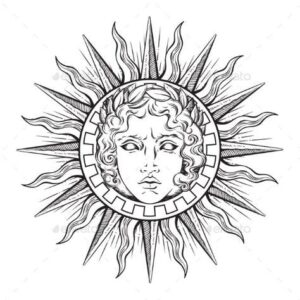
Symbology
- Sun Chariot: Symbolizes Apollo’s role as the Sun God.
- Lyre: Represents his musical prowess.
- Laurel Wreath: Symbol of victory and accomplishment.
- Bow and Arrows: Emphasizes archery skills and associations with plague and pestilence.
Apollo’s myths contribute to Greek mythology, showcasing his importance in divine and mortal realms.
Apollo FAQ
Who is Apollo?
Apollo is one of the Twelve Olympian deities in Greek mythology, known for his association with music, poetry, prophecy, healing, archery, and the Sun. He is the son of Zeus and Leto, and the twin brother of Artemis.
What is Apollo's Symbol?
Apollo's symbols include the sun chariot, lyre (a musical instrument), laurel wreath, and bow with arrows.
What is Apollo the God of?
Apollo is the god of various domains, including music, poetry, prophecy, healing, archery, and the Sun.
What is the Roman Name for Apollo?
The Roman name for Apollo is also Apollo.
Where Does Apollo Live?
Apollo, like other Olympian gods, is said to reside on Mount Olympus, the mythical home of the gods in Greek mythology.
Where Was Apollo Born?
Apollo was born on the island of Delos, where his mother Leto sought refuge from Hera's persecution during her pregnancy.
What Does Apollo Look Like?
Apollo is typically depicted as a handsome, youthful god with golden hair, bright eyes, and an athletic physique. His appearance reflects divine beauty and grace.
What Did Apollo Do?
Apollo is involved in various myths and stories, including his role as the Sun God, his musical contests, the founding of the Oracle of Delphi, and his pursuit of the nymph Daphne.
Who Are the Parents of Apollo?
Apollo's parents are Zeus, the king of the gods, and Leto, a Titaness.
